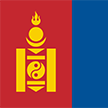Mantle MNT Launch: Exploring the Revolutionary Layer-2 Blockchain and Its Ecosystem
Introduction to Mantle MNT Launch
The Mantle MNT Launch marks a transformative milestone in the blockchain industry, introducing a cutting-edge Layer-2 solution built on Ethereum. Mantle Network leverages Optimistic Rollup technology to address scalability challenges, reduce transaction costs, and enhance overall network performance. This article explores the Mantle ecosystem, its innovative products, and the pivotal role of the MNT token in shaping the future of decentralized finance (DeFi).
Mantle Network’s Layer-2 Blockchain Technology and Scalability Features
Mantle Network is a Layer-2 blockchain designed to overcome Ethereum’s scalability limitations. By utilizing Optimistic Rollup technology, Mantle delivers:
Faster Transactions: Significantly reduced transaction times compared to Ethereum’s Layer-1.
Lower Costs: Optimized transaction fees, making DeFi more accessible to users.
Enhanced Performance: Improved throughput and network efficiency for developers and end-users.
These features position Mantle as a competitive player in the Layer-2 landscape, offering high-performance blockchain infrastructure tailored to the needs of the Web3 era.
UR Neobank: Bridging TradFi and DeFi
Mantle’s launch of UR, the world’s first blockchain-based neobank, is a groundbreaking initiative aimed at integrating traditional finance (TradFi) with decentralized finance (DeFi). Key features of UR include:
Multi-Currency Accounts: Users can manage fiat currencies and stablecoins side-by-side.
Swiss-Backed IBAN Accounts: Secure and globally recognized banking solutions.
Mastercard Debit Card: Seamless spending across fiat and crypto assets.
UR also incorporates tokenized deposits and NFT-based identity systems, paving the way for innovative financial services. Future plans include adding DeFi features such as yield generation and crypto-collateralized credit, further enhancing its utility and appeal.
MNT Token: Utility, Governance, and Market Performance
The MNT token serves as the backbone of the Mantle ecosystem, functioning as both a governance and utility token. Key aspects of MNT include:
Governance Role: Token holders can participate in decision-making processes within the Mantle ecosystem.
Utility Functions: MNT is used for transaction fees, staking, and accessing Mantle’s products and services.
Supply Distribution: 51% of the token supply is in circulation, while 49% is allocated to the Mantle Treasury.
Despite market fluctuations influenced by external factors, the MNT token’s utility within the ecosystem remains a driving force for adoption and long-term growth.
Mantle’s Ecosystem Expansion Through Grants and Partnerships
Mantle Network is actively expanding its ecosystem through initiatives like the Mantle Grants Program and Mantle EcoFund, which boasts a $200 million allocation. These programs aim to:
Support Developers: Funding innovative projects that leverage Mantle’s Layer-2 technology.
Foster Collaboration: Building strategic partnerships to strengthen the Mantle ecosystem.
Increase Total Value Locked (TVL): Mantle currently has over $220 million in TVL, showcasing its growing influence in the DeFi space.
Mantle’s mETH Protocol and COOK Governance Token
Mantle’s mETH protocol has gained traction as a popular liquid staking solution. It allows users to stake Ethereum and earn rewards while maintaining liquidity. Additionally, Mantle introduced the COOK governance token in late 2024, further enhancing its staking ecosystem.
These innovations underscore Mantle’s commitment to providing robust DeFi solutions and empowering users within its ecosystem.
Strategic ETH Reserve and Market Positioning
Mantle’s strategic ETH reserve of $388 million highlights its long-term commitment to the Ethereum ecosystem and Web3. This reserve enables:
Enhanced Liquidity: Supporting ecosystem growth and stability.
Market Confidence: Demonstrating financial strength and strategic foresight.
Mantle’s ETH reserve positions it as a significant player in the blockchain space, fostering trust and reliability among developers and investors.
Mantle’s Innovative Financial Products: MI4 and FBTC
Mantle’s ecosystem includes groundbreaking products like Mantle Index Four (MI4) and Function (FBTC), which aim to redefine financial services in the Web3 era. These products focus on:
Diversified Investment Opportunities: Offering users exposure to various assets within the Mantle ecosystem.
Advanced Financial Tools: Leveraging blockchain technology to create innovative solutions for DeFi users.
Competitive Landscape and Differentiation
While Mantle competes with other Layer-2 solutions like Arbitrum and Optimism, it differentiates itself through:
Unique Features: Swiss-backed IBAN accounts and NFT-based identity integration via UR.
Strategic Reserves: A substantial ETH reserve that bolsters its market positioning.
Innovative Protocols: The mETH protocol and COOK governance token add depth to its staking ecosystem.
Mantle’s unique offerings and strategic initiatives set it apart in the competitive Layer-2 blockchain landscape.
Conclusion
The Mantle MNT Launch represents a pivotal moment in the blockchain industry, showcasing the potential of Layer-2 technology and innovative financial products. With its robust ecosystem, strategic initiatives, and commitment to bridging TradFi and DeFi, Mantle is poised to make a lasting impact on the future of decentralized finance.
Whether you’re a developer, investor, or blockchain enthusiast, Mantle’s ecosystem offers a wealth of opportunities to explore and engage with cutting-edge solutions in the Web3 era.
© 2025 OKX. Este artigo pode ser reproduzido ou distribuído na sua totalidade, ou podem ser utilizados excertos de 100 palavras ou menos deste artigo, desde que essa utilização não seja comercial. Qualquer reprodução ou distribuição do artigo na sua totalidade deve indicar de forma clara: “Este artigo é © 2025 OKX e é utilizado com permissão.” Os excertos permitidos devem citar o nome do artigo e incluir a atribuição, por exemplo, "Nome do artigo, [o nome do autor, caso aplicável], © 2025 OKX." Alguns conteúdos podem ser gerados ou ajudados por ferramentas de inteligência artificial (IA). Não são permitidas obras derivadas ou outros usos deste artigo.


